Time Bracket Racing (TBR) Explained
Posted: Sun Mar 05, 2023 6:37 pm
Time Bracket Racing (TBR)
Categories
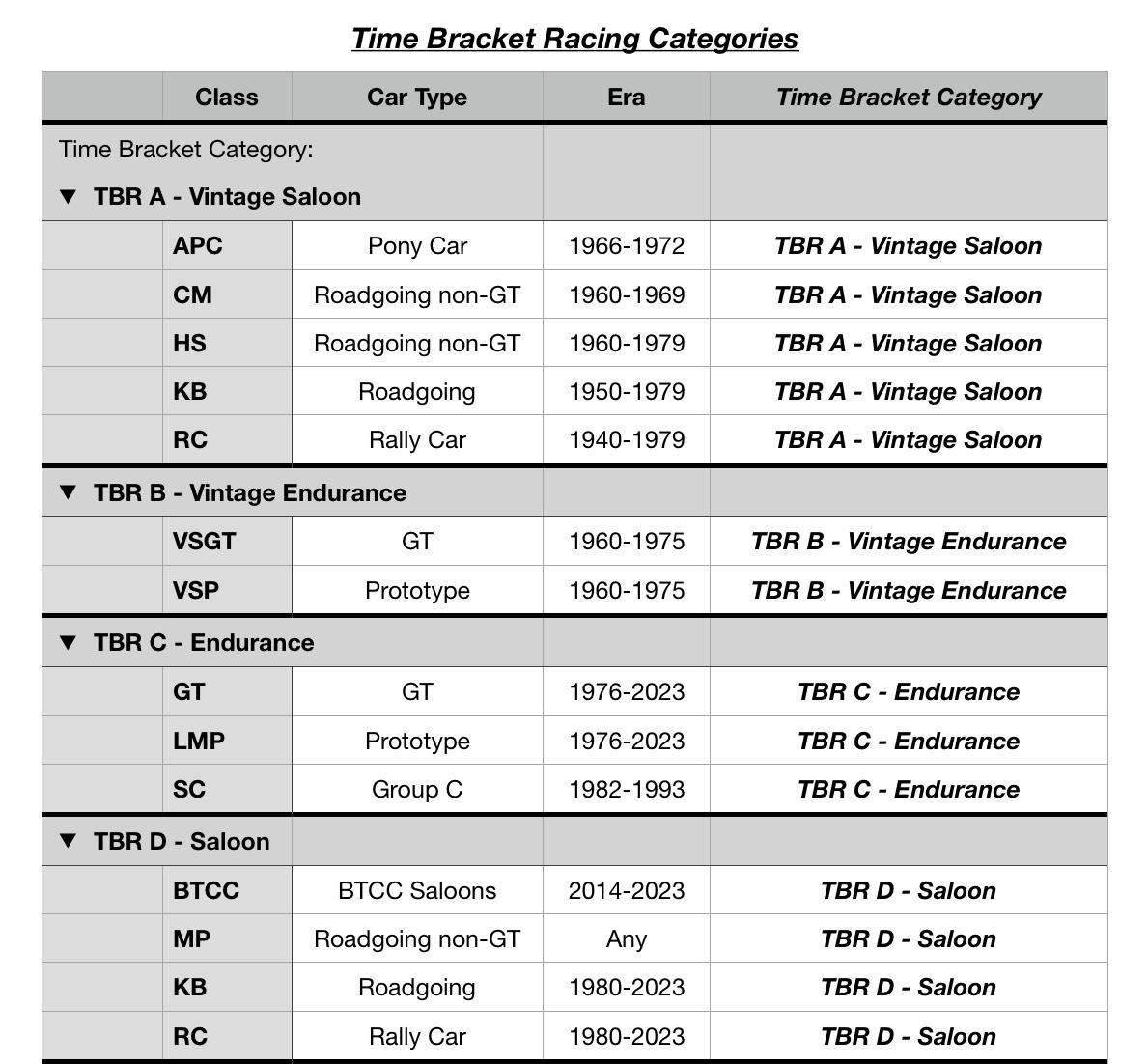
Qualifying:
Each driver can qualify each car they have access to (they don’t have to own the cars). This will be done individually over three timed laps, fastest time being that car/driver combination’s official qualifying time. It is in everyone’s interest to qualify as many different cars as possible as this will provide options to participate in as many races as possible. It is important that anyone wishing to race be present for qualifying. Drivers without a qualifying time will not be eligible for any races (they’re still very welcome to attend and be part of the enjoyable camaraderie). Qualifying should utilise approximately the first hour of competition.
Races:
Races will be run in grids of three to six cars, fastest to slowest. The number of races will be based on the number of drivers present. So, if there are six or more drivers present, the first race can comprise the fastest six car/driver combinations, the second race the next fastest six, etc. It’s possible to have six or more drivers present, yet limit each race to fewer than six cars if we want. Races will be run over twenty laps each.
Sample computer screenshots:
The following screenshots from the software I developed for TBR help explain how things work.
This is fictitious qualifying result data showing the info for each car/driver combination, including their fastest actual qualifying time and minimum legal race time (approx 0.5 sec quicker than the qualifying time). Anyone doing a faster time than this minimum during the race will be disqualified (no sandbagging!).
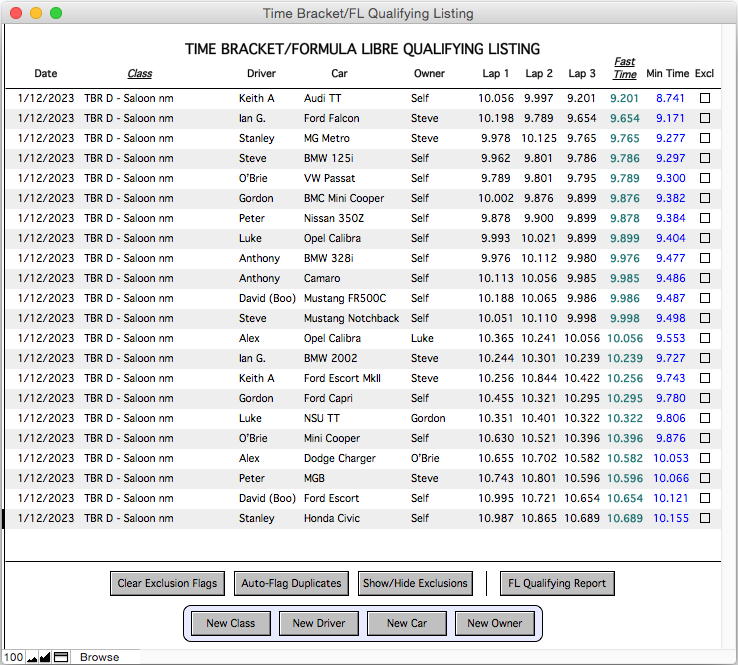
Maximum grid size setting. In this example, the size is set for grids of six cars. Its quite possible for the last race to have fewer than the number here.
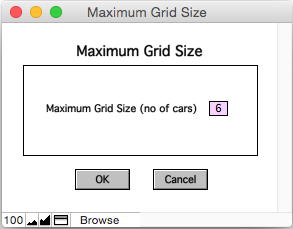
Given the above data, the grids are calculated as shown below. You'll notice that the last grid has only three cars.
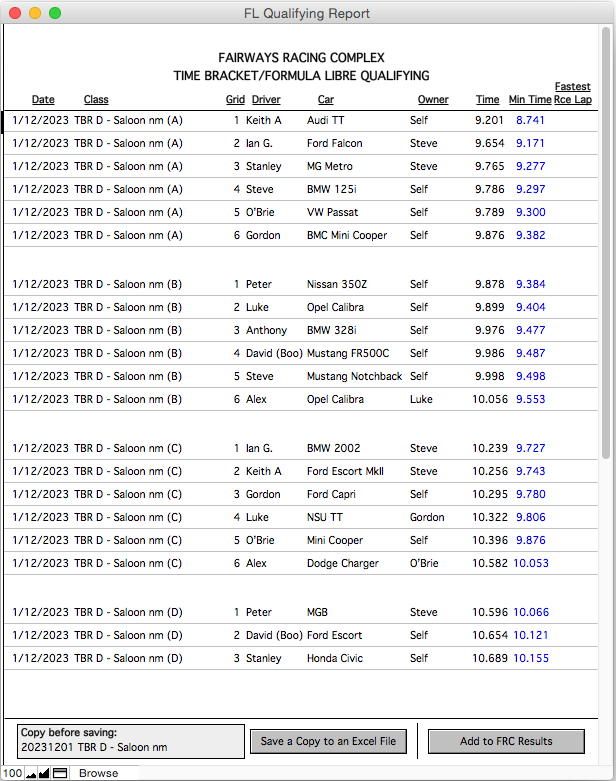
The following screenshot shows that Anthony qualified two cars very closely together. You will notice that the calculated grids above do not include his second car since he can only drive one car in a race. It is possible in situations like this for a driver to opt to drive the slower car (perhaps because its easier to drive over the length of a race). This is done by excluding the faster car using the "Excl" checkbox on the right.
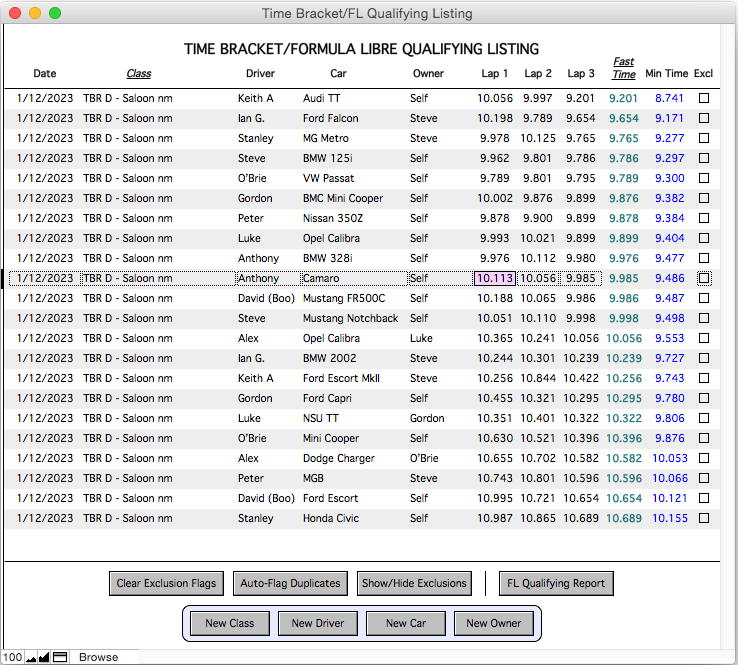
This type of competition will produce close racing and it will allow cars that we seldom (if ever) race to actually be raced competitively.
Don't miss it!
Categories

Qualifying:
Each driver can qualify each car they have access to (they don’t have to own the cars). This will be done individually over three timed laps, fastest time being that car/driver combination’s official qualifying time. It is in everyone’s interest to qualify as many different cars as possible as this will provide options to participate in as many races as possible. It is important that anyone wishing to race be present for qualifying. Drivers without a qualifying time will not be eligible for any races (they’re still very welcome to attend and be part of the enjoyable camaraderie). Qualifying should utilise approximately the first hour of competition.
Races:
Races will be run in grids of three to six cars, fastest to slowest. The number of races will be based on the number of drivers present. So, if there are six or more drivers present, the first race can comprise the fastest six car/driver combinations, the second race the next fastest six, etc. It’s possible to have six or more drivers present, yet limit each race to fewer than six cars if we want. Races will be run over twenty laps each.
Sample computer screenshots:
The following screenshots from the software I developed for TBR help explain how things work.
This is fictitious qualifying result data showing the info for each car/driver combination, including their fastest actual qualifying time and minimum legal race time (approx 0.5 sec quicker than the qualifying time). Anyone doing a faster time than this minimum during the race will be disqualified (no sandbagging!).

Maximum grid size setting. In this example, the size is set for grids of six cars. Its quite possible for the last race to have fewer than the number here.

Given the above data, the grids are calculated as shown below. You'll notice that the last grid has only three cars.

The following screenshot shows that Anthony qualified two cars very closely together. You will notice that the calculated grids above do not include his second car since he can only drive one car in a race. It is possible in situations like this for a driver to opt to drive the slower car (perhaps because its easier to drive over the length of a race). This is done by excluding the faster car using the "Excl" checkbox on the right.

This type of competition will produce close racing and it will allow cars that we seldom (if ever) race to actually be raced competitively.
Don't miss it!